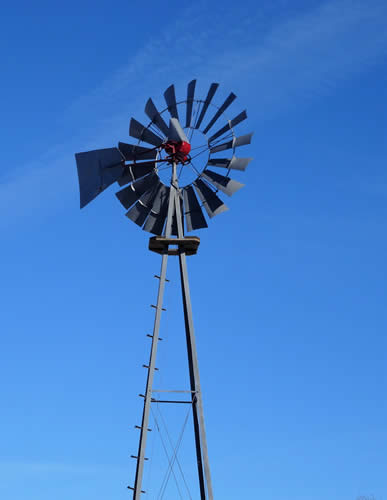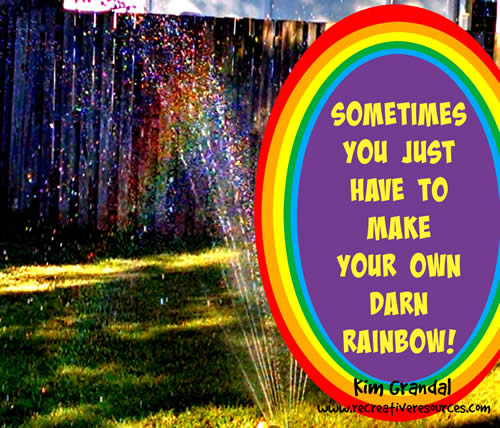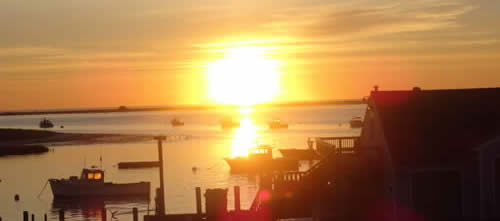 Science for Seniors – A hands-on activity program that brings
the fun and excitement of learning to your facility.I bet you and your residents have heard the old saying, “You
can’t teach an old dog new tricks.” Science is proving this saying wrong every
day! Science for Seniors – A hands-on activity program that brings
the fun and excitement of learning to your facility.I bet you and your residents have heard the old saying, “You
can’t teach an old dog new tricks.” Science is proving this saying wrong every
day!
Clive A. Wilson, author of “No One Is Too Old to Learn:
Neuroandragogy: A Theoretical Perspective on Adult Brain Functions and Adult
Learning” discusses how adults can learn new concepts and sharpen their minds
throughout life. Wilson’s book discusses how adults can learn new concepts and
sharpen their minds throughout life. This is possible, he states, because brain
plasticity still occurs late in life. Even more interesting Wilson points out
humans may be able to experience new brain cell growth as we age if we continue
the lifelong process of learning. His book also makes an argument for the
theory of a possible delay of Alzheimer’s disease in people who continue to
learn.
Scientists have discovered that when you recall a song or
repeat an action, your brain lights up with the memory and the stored path of
the original connection. However, when you learn new information, your brain
must find new connections. These connections strengthen the brain and add weight
to the brain which increases brain health.
Science for Seniors is a fun way to strengthen these
connections by learning about new discoveries, answering questions, and finding
out how things work.
A Science for Seniors Activity Program has four basic
components:
- Introduce a topic – the list is endless. It could be a current
event such as the BP Oil Leak in the Gulf; a chance to learn more about an
animal like the therapy dog who visits monthly; or a way to discuss a question
as big as the universe, example: how did the sun begin and how will it end?
- A video on the topic. There are DVDs available free from
public, school or college libraries through interlibrary loan. They may be
rented from video stores, video vending machines or home subscription services
such as Netflix for a low fee. Videos may also be purchased online from websites
including: Amazon.com; Science.Discovery.com; ShopPBS.org; and Shop.History.com.
- Demonstration/ experiment: Using everyday items found in the
kitchen, the craft room and even on the outside grounds of the facility you can
conduct demonstrations and experiments that are safe and engage the residents as
participants.
- Discussion and follow-up. After the experiment have residents
discuss what surprised them, did it remind them of any other experiences. Have a
few library books for those interested in learning more on the topic. Always ask
– what would they like to do in the next science program?

Science for Seniors- Sample Programs
Let’s Get Started! Three Sample Science for Seniors
Programs.
Sample 1
Current event topic – BP Gulf Oil Spill.
1)Introduction - On April 22, 2010, a BP Oil rig in the Gulf of
Mexico exploded. Two days later, it was discovered that oil was pouring from the
rig’s broken pipe on the ocean floor of the coast of Louisiana. As of July 2010,
the oil spill had spread across waters on the coastlines from Texas to
Florida.
2) Video - If possible record CNN or another televised or web
program with the most up to date information on the spill. Alternative – borrow
or rent video on how oil is produced. Suggestion: A Crude Awakening –The Oil
Crash available at Greenplanetfilms.org.
3)Experiment – Gather together the following materials: 10 x 13
glass baking pan; water, motor oil; freshly cut human hair and a pencil. Fill
the pan with water. Pour oil over the top of the water. Place the hair on top of
the oil. Now use the pencil to soak the hair in the oil. Next, push the oily
hair across the water to the side of the pan. As you do you will notice the hair
absorbed the oil.
4)Discussion – Hair salons around the country are collecting
clean hair and sending it to the gulf where it is placed in nets and used to
absorb oil off the surface of the water. Ask – who has lived, visited, worked or
has family and friends in the areas affected by the oil spill? Would you like to
read about how oil is drilled from the earth as well as the sea? What topic
would you like for the next science program?
Sample 2
Animals – Therapy Dogs
Topic – Dogs have been a part of man’s life for more than 15,000
years. Scientists believe all dogs are descended from wolves and that the first
wolf found his/her way into a human camp when seeking shelter from the
elements.
Human domesticated wolves who evolved into dogs. Archeologists
believe the first domesticated dogs were in Asia. The many types of dogs are a
result of human breeding for specific useful traits such as hunting and herding
dogs.
Dogs have over 200 million scent cells while humans have a mere
5 million scent cells.
In hearing, dogs also have an advantage over people. They can
hear sounds as low as the 16 to 20 Hz frequency and as high as 70,000 to 100,000
Hz. Humans can hear in a range of 20 to 70 Hz for the low sounds and 20,000 Hz
for high sounds.
In addition, the averages of 18 muscles in dogs’ ears allow them
to tilt their heads to hear sounds faster and at four times the distance of a
person.
Dogs do not see the full spectrum of colors seen by humans;
rather they see shades of purple and yellow. Their eyes do not see the detail of
human sight, however they do see in less light and detect motion faster than a
person.
2) Video suggestion – Nature: Dogs – available from
ShopPBS.org. Look for a video on the life of dogs. Example: You may be able to
obtain a video from the local 4-H clubs, a Canine Association, or even the K-9
Police Department as they use such videos when presenting talks at schools and
community events.
3) Demonstration – Dogs can detect odors missed by humans.
Gather together two clean glass jars, meat juice, water, sunlight and a friendly
dog. Mark the jars A and B. Place meat juice in jar A. Rinse the jar with water
only and place jar A it in the sunlight for one day. Sun and water reduce the
residue smell in the jar. Next day – bring both jars and the dog to the Science
for Seniors program. Ask residents to smell both jar and guess which one had
meat juices. Now place the jars on the floor and see which one the dog is
attracted to – stand close by so the dog does not break the jar.
- Discussion – Ask who was surprised they could not tell the difference in the
jars? Have residents talk about their own dogs – maybe tell funny stories about
their pets finding smelly items. Ask who would like to read a book of animal
stories. Ask for suggestions for the next Science for Seniors program.
Sample 3
Topic - How did the Earth/ Solar System form and how will it
end? Our solar system consists of one sun and eight planets. Scientists believe
it formed 4 .5 billion years ago when a swirling cloud of gas and dust known as
a nebula had a chain reaction that resulted in gravity pulling together the sun.
Remaining dust and particles were pulled together in a similar fashion to form
the planets and moons.

Our sun burns hydrogen and helium. Scientists predict it will
continue to burn hydrogen and helium for another 4 billion years. When its
hydrogen fuel is exhausted and the sun is burning just helium, the sun will
swell to over one hundred times its current size. As the sun’s mass expands, it
will destroy Mercury, Venus, the two inner most planets closest to the sun.
Next, it will send solar flares out that will reach the Earth. This will cause
the Earth’s oceans to boil and rip the atmosphere from our planet. The expanded
sun may also rip the Earth apart. Scientists are unsure if the Earth will be
torn into pieces due to a gravitational dug between the sun and the Earth or if
Earth will become a cold, burnt, barren hunk of rock floating in space.
After the sun becomes a red giant, it will burn for about
another billion years. Our sun will eventually shrink down to the size of the
Earth and become a white dwarf star.
Why won’t our sun explode like a supernova? Our sun is too small
to be a supernova. Supernovas are about eight to 15 times the mass of our sun.
They occur about once every 50 years in our galaxy.
Like all suns, supernovas burn hydrogen and helium however, when
a supernova exhausts these fuels the core heats up and becomes denser. There is
a resulting implosion that bounces off the core and expels the remaining stellar
matter into space. That discharge of stellar matter we observe as a supernova.
What remains after a supernova becomes a neutron star.
2) Video – Core Astronomy at ShopPBS.org and the Universe series at store.discovery.com are two of many videos available
on this topic.
3) Demonstration – Gather together a red and a yellow balloon, a
straight pin, globe, and a volunteer to blow up a balloon. Blow up the yellow
balloon, hold the end closed but do not tie shut – just pinch with your fingers.
Now have a resident hold the globe as you release the air from the yellow
balloon so the air passes over the globe. This shows how the sun will rip the
atmosphere from the Earth. Next blow up the red balloon. Tie it shut. Hold it up
and remind residents this is a stand-in for a large red sun, larger than our
sun, it is far off in space and will end in a supernova explosion – then pop the
balloon with the pin to stimulate the explosion.
4) Discussion – Who has visited a planetarium? Who has seen the
stars through a telescope? If possible – you could ask who would like to visit a
planetarium and/or invite members of a local astronomy club to set-up telescopes
at your facility so your residents could enjoy a closer look at the stars. Ask
who would like to read a book about astronomy. Solicit ideas for the next
Science for Seniors program.
Science for Seniors - Reminders
Important reminders when using the Science for Seniors
activity:
- Always practice the demonstration/experiment prior to the
program! You may have to adjust an ingredient, or allow more time, or bring
extra supplies if residents want to repeat the demo so more residents can enjoy
the hands-on participation.
- Always order the video/DVD early –a) To be sure it arrives on
time for your program; b) to preview the video so you can adjust the film for
your time limits; c) to make sure the video your selected does match your
Science for Seniors topic.
- If possible, do your experiments/demonstrations in the middle
of the room with residents in a circle for best viewing or place the
experiment/demonstration on a cart so if needed you can move around the room
repeating the experiment/demonstration so everyone has a clear view of the
process.
- Always involve the residents in the experiments, the program
suggestions, etc. Have them tell their family members about the program and if
possible invite them to attend. Several times when I told resident family
members and visitors about our science program their response was, “Boy, I’d
like to see that!”
- Always, always remember - this activity is not a success
without the Senior in Science for Seniors.
For more information on booking Guitar with Gloria
sing-a-longs, featuring large print song books, handheld jingle sticks for all
residents and themed programs from patriotic to holidays including St. Patrick’s
Day and Halloween as well as information on
Science for Seniors programs visit
her website at: GuitarwithGloria.com;
by email: GuitarwithGloria@yahoo.com.
|







